

  |
Page 1 |
The Sultan Mine is located in the White Pine mining district of southern Nevada. The district was worked from the mid 1800s through the mid 1900's. Like most other mines in this district, lead and zinc were the primary minerals with lesser amounts of copper and gold extracted as well. The Sultan claim was placed in 1896 with production running from 1910 to 1926. Production resumed during WWII from 1941 to 1946.
| Someone decided to 'tag' the mine with the Sultan name. | 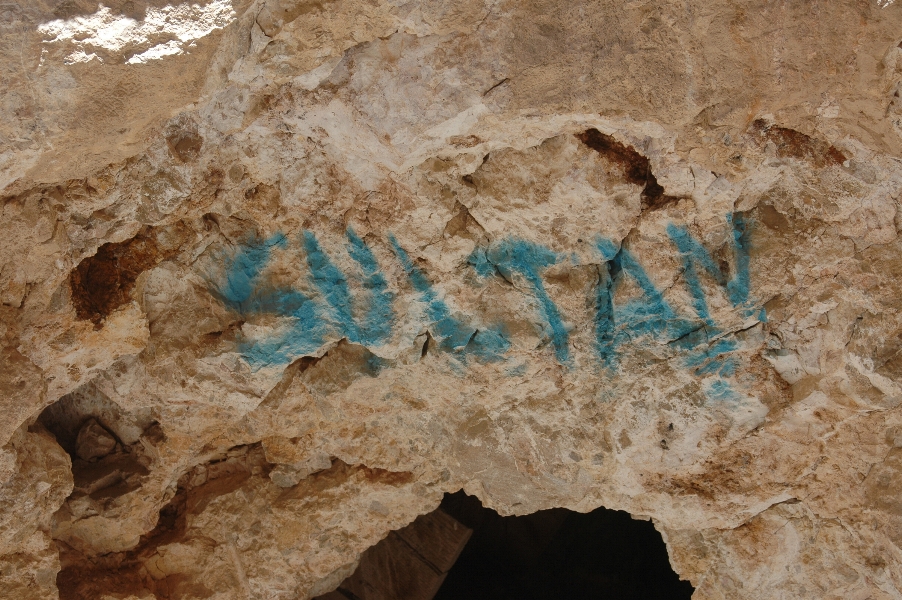 |
| This photo from the early 1920's shows that the mine was in full production from the early 1900's. | 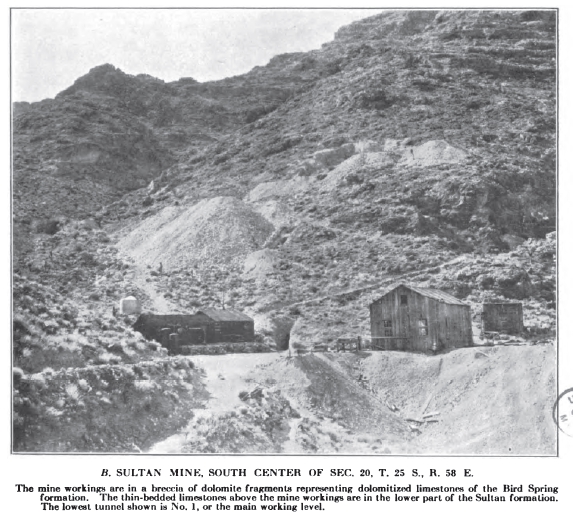 |
| Today's picture looks very similar to the one from the
1920's. No doubt it's the same mine! The mine complex is scattered across the face of this ridge at three different levels. |
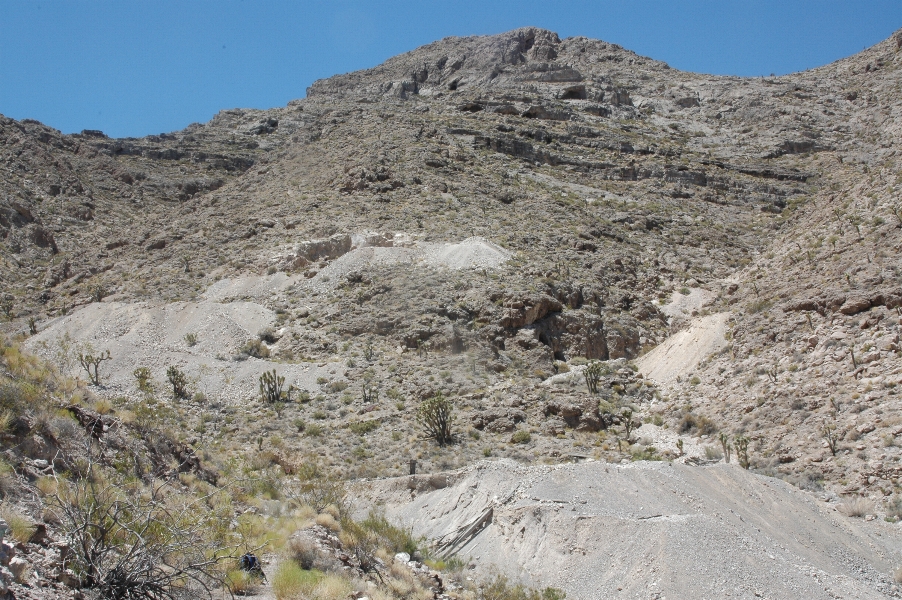 |
| The ore hopper overlooks the vast desert landscape. | 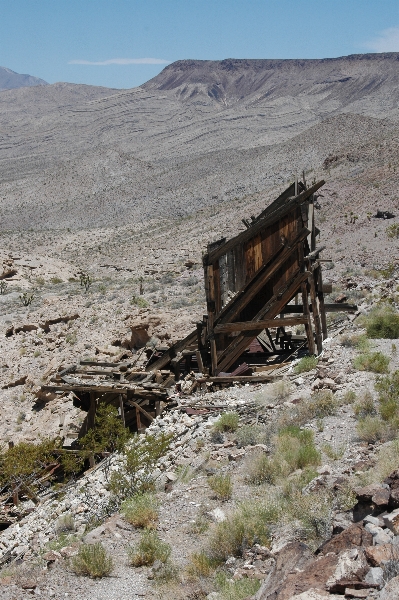 |
| Much of the structure surrounding the ore hopper has collapsed. | 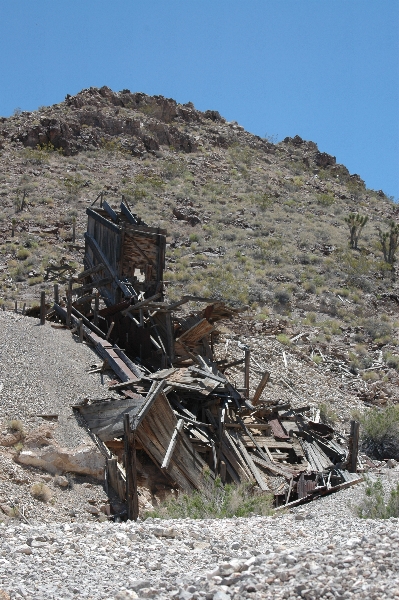 |
| This structure appears to have been part of a "bridge" that connected track from the mine to the top of the ore hopper. |  |
| The main adit looks somewhat daunting. | 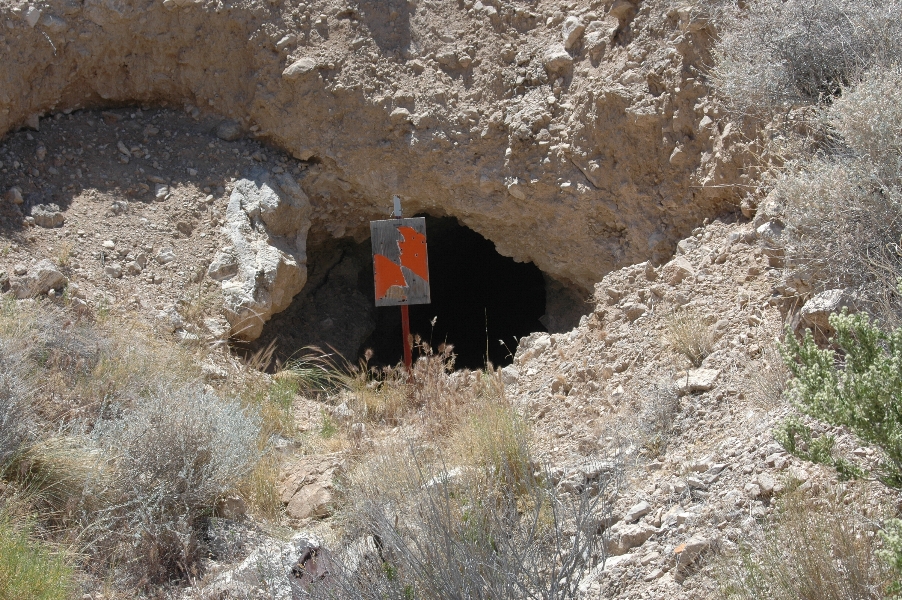 |
| A number of ore chutes line the main drift. | 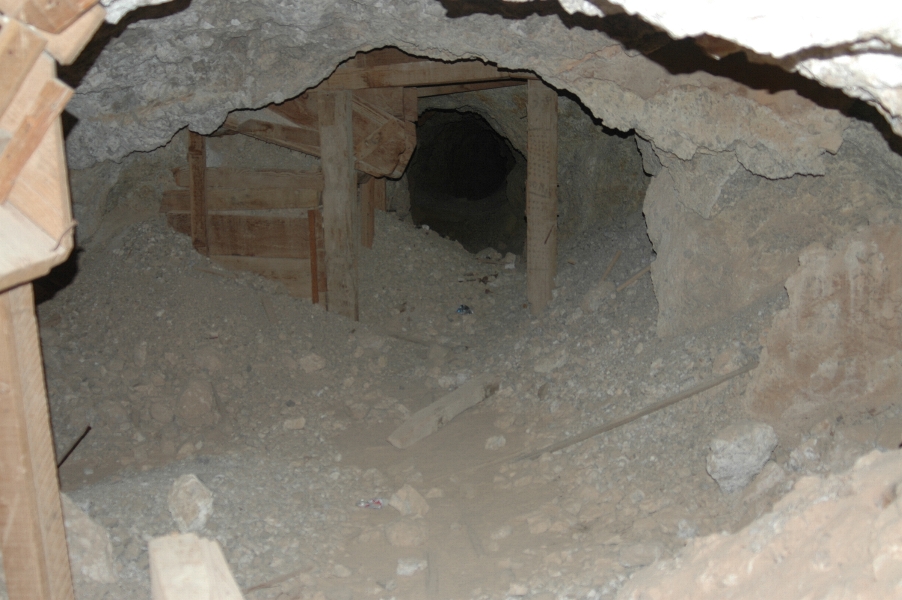 |
| This is likely where explosives were stored. | 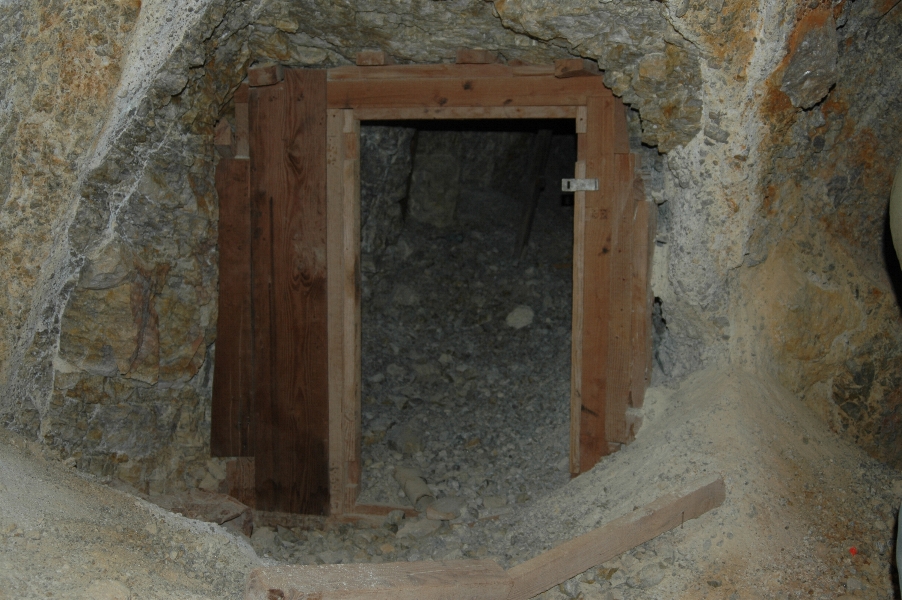 |
| The geology in this mine is quite interesting. The
horizontal sedimentary layers have been forced into a near vertical
position. Faults intersect this mine in several places. |
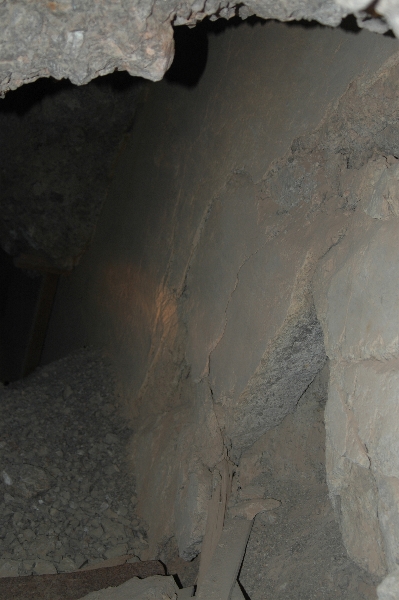 |
| This appears to be an exploration drift. It continues for some distance, then ends with no evidence of mining activity. | 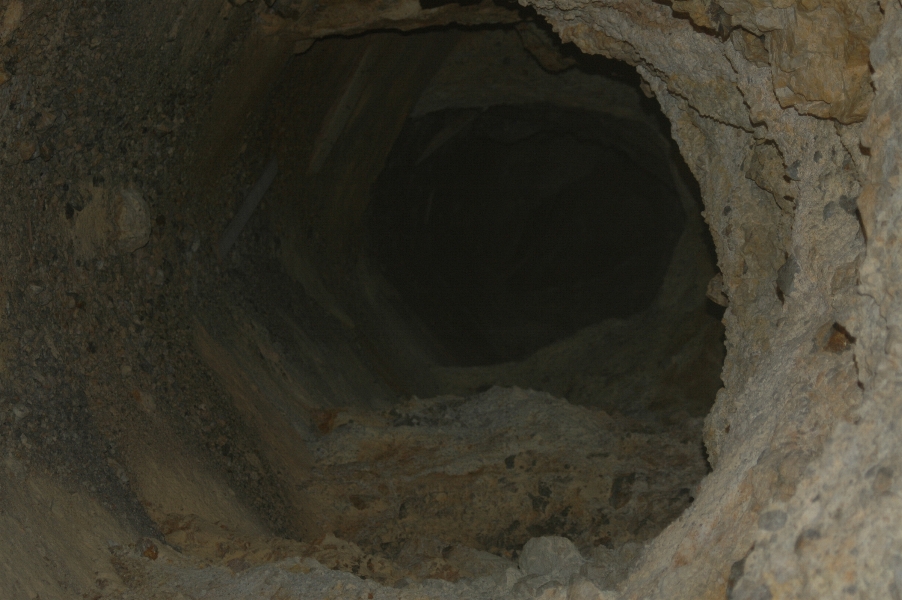 |
| The end of the drift looks like the miners simply gave up hope of finding profitable ore in this section of the mine. | 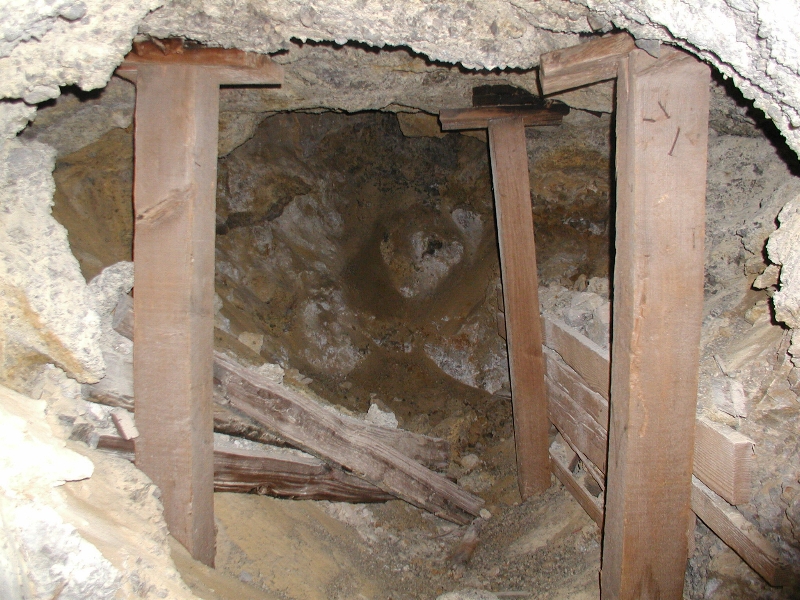 |
| Another example of the breccia layers. The lower level has all dark rock and material, while above are lighter colored rock. | 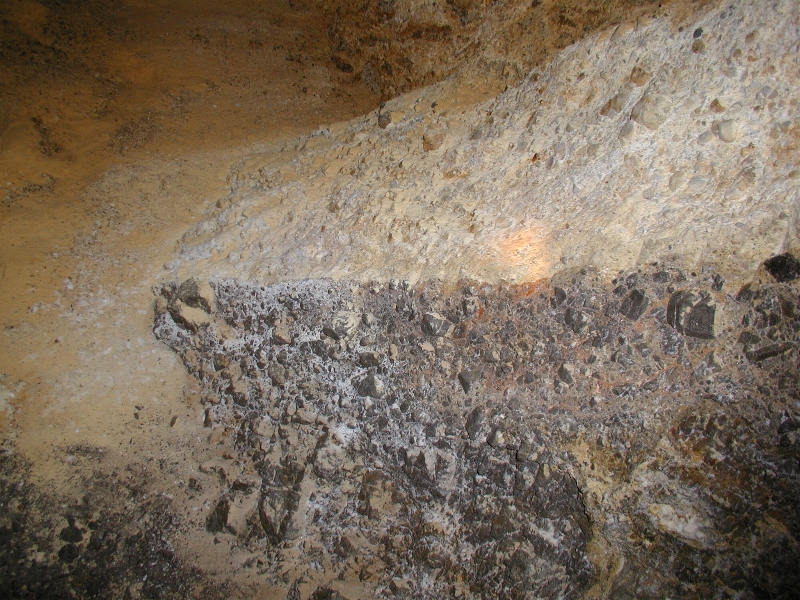 |
| These old timbers are thrown into an unused drift. | 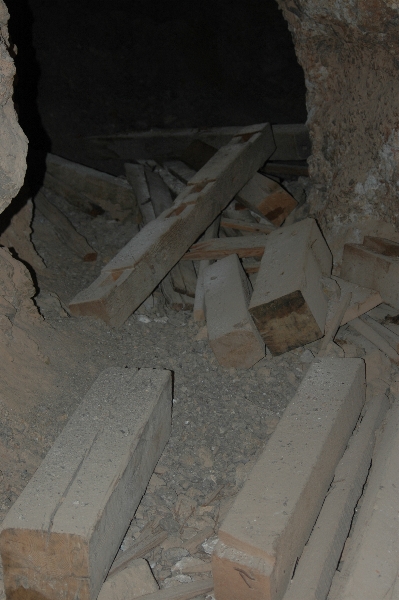 |
| This bridge spans a stope and allowed miners to move
ore from deep within the mine out to the mine adit. Sharp drop-offs under the bridge are evidence of extensive stoping in this area. |
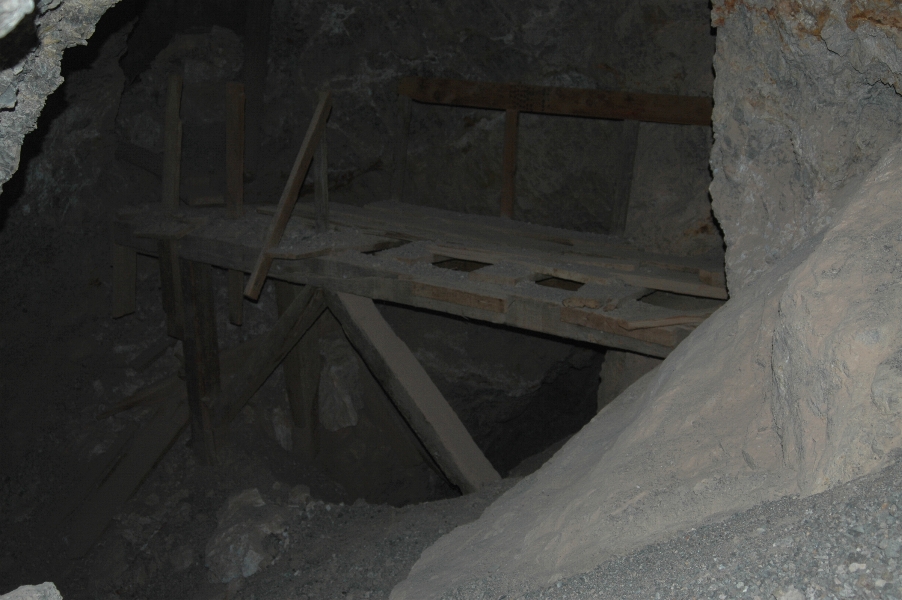 |
| The structure doesn't inspire a lot of confidence. The last portion of the bridge is missing with just a couple of boards connecting it to the drift on the far side. | 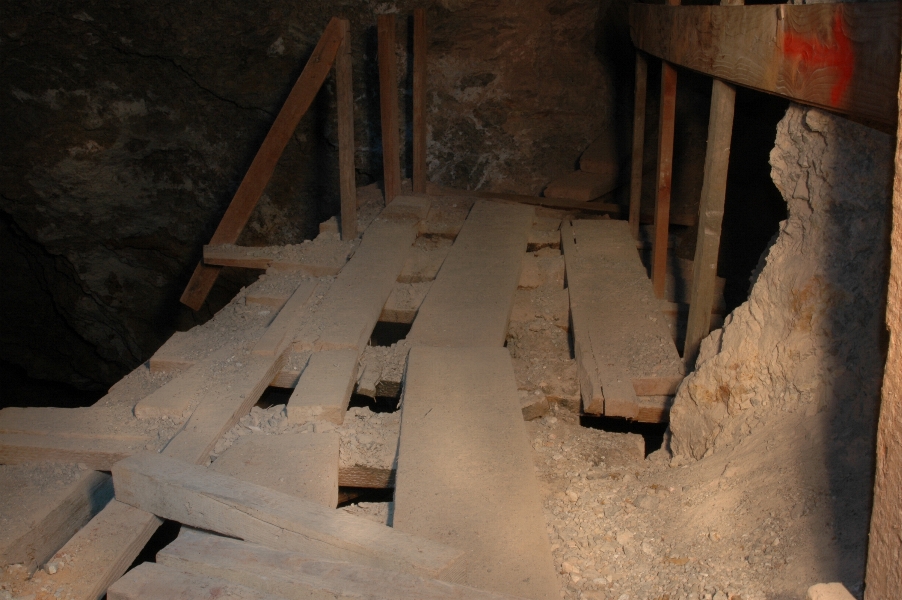 |
| Ore chutes are used by miners so that gravity will do
the hard work of loading ore into mining cars for transport out of the
mine. Those early miners were smart guys. |
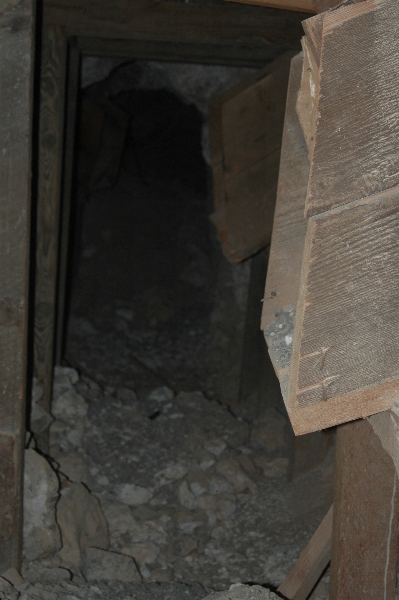 |
| This wall is shored up against collapse. Notice that the miners used yucca plants to fill in gaps between the wood. | 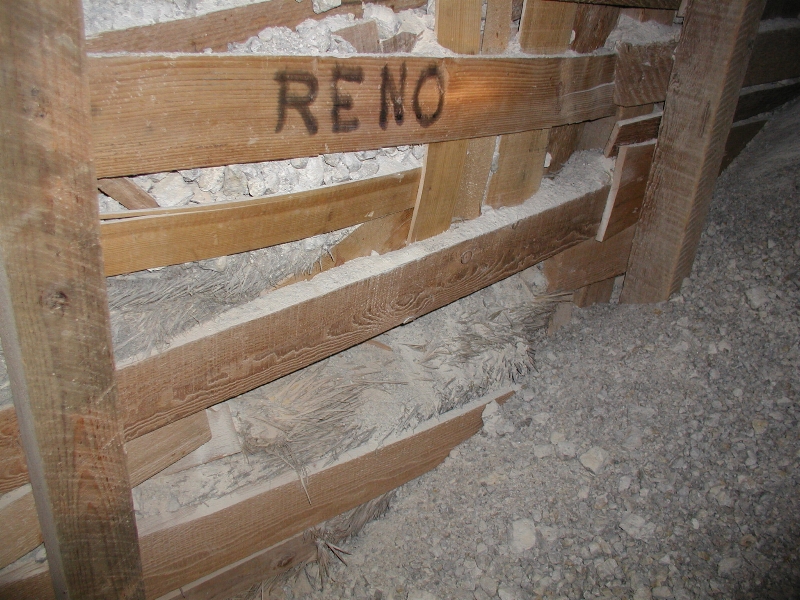 |
| Throughout the mine are examples of the boundary layers of the sedimentary rock. | 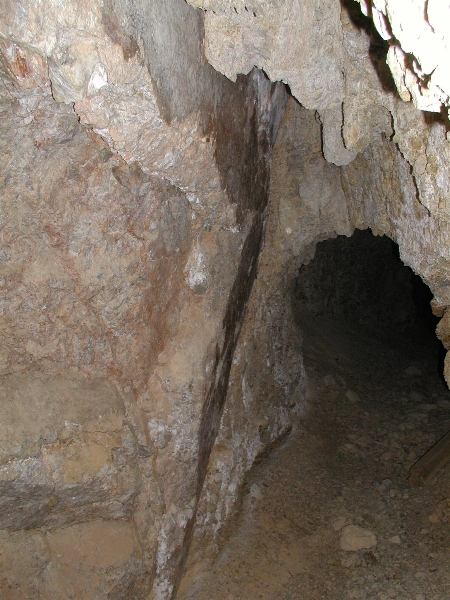 |
| These ladders are at the base of a rise that goes up to the next level up. | 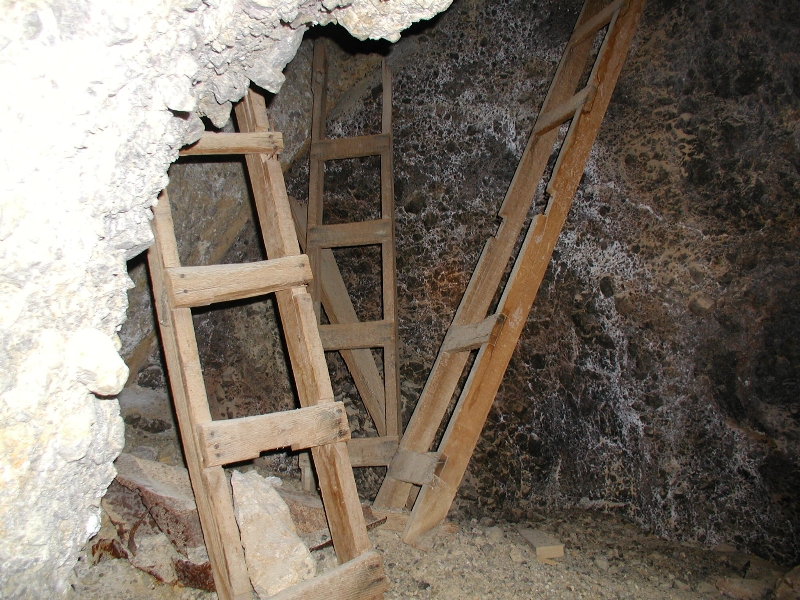 |
| This is looking straight up the rise. It goes up further than my light can penetrate. | 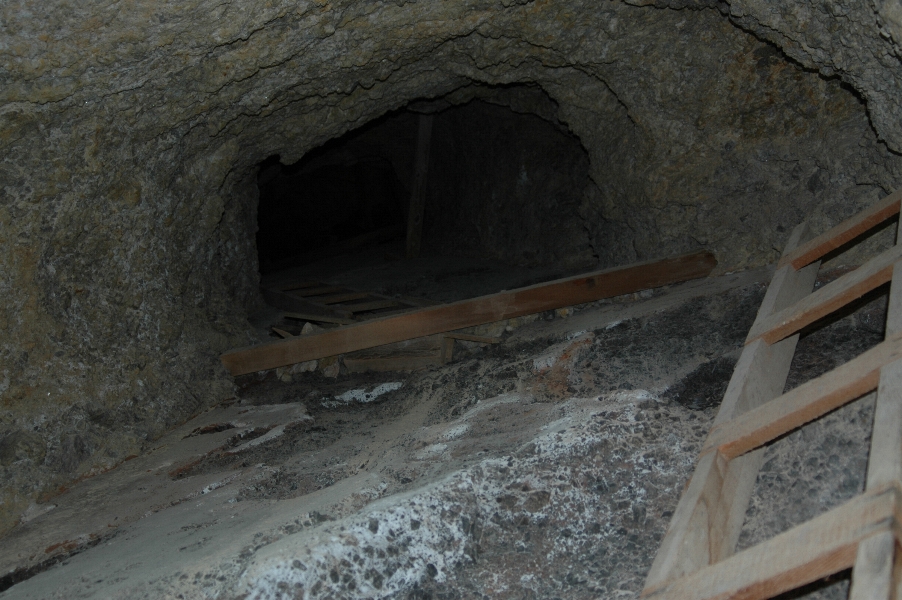 |